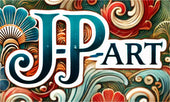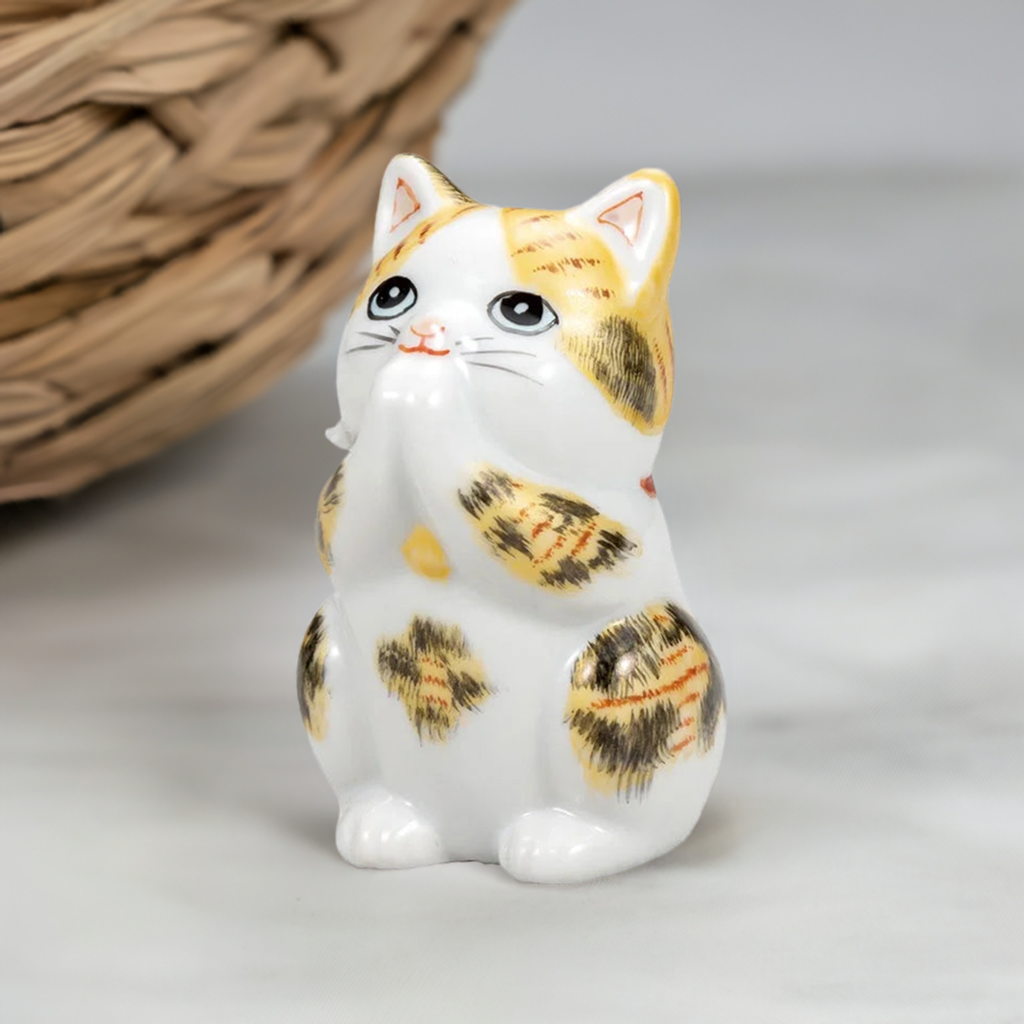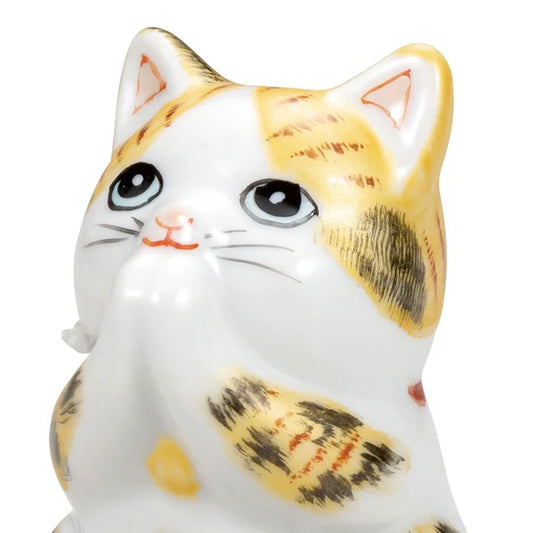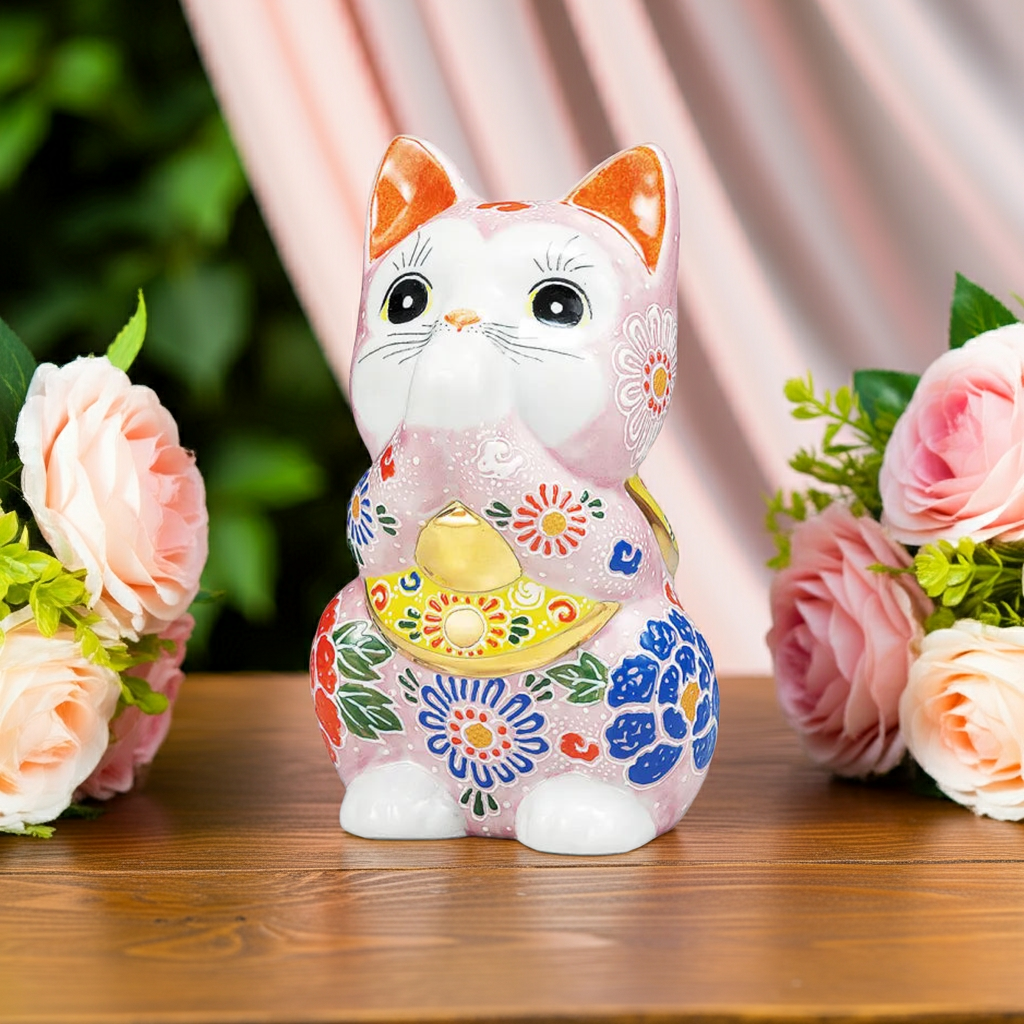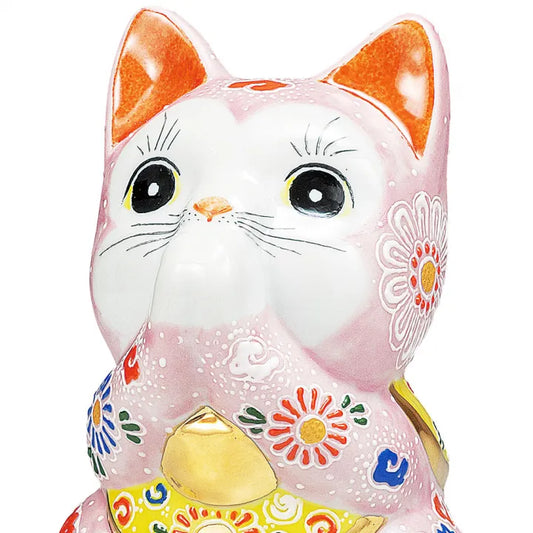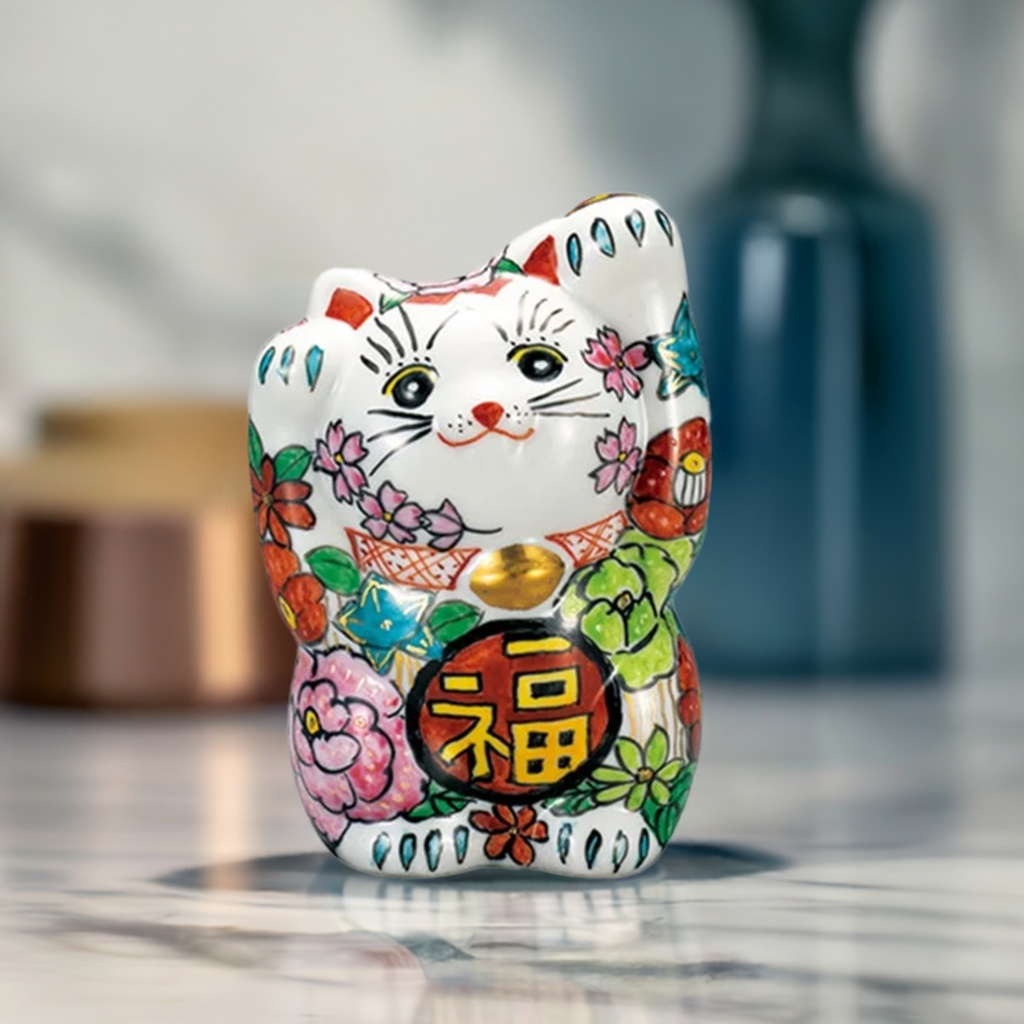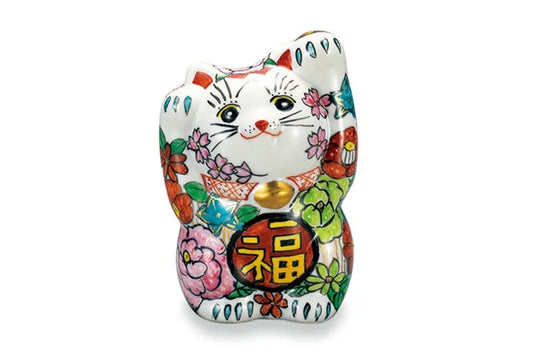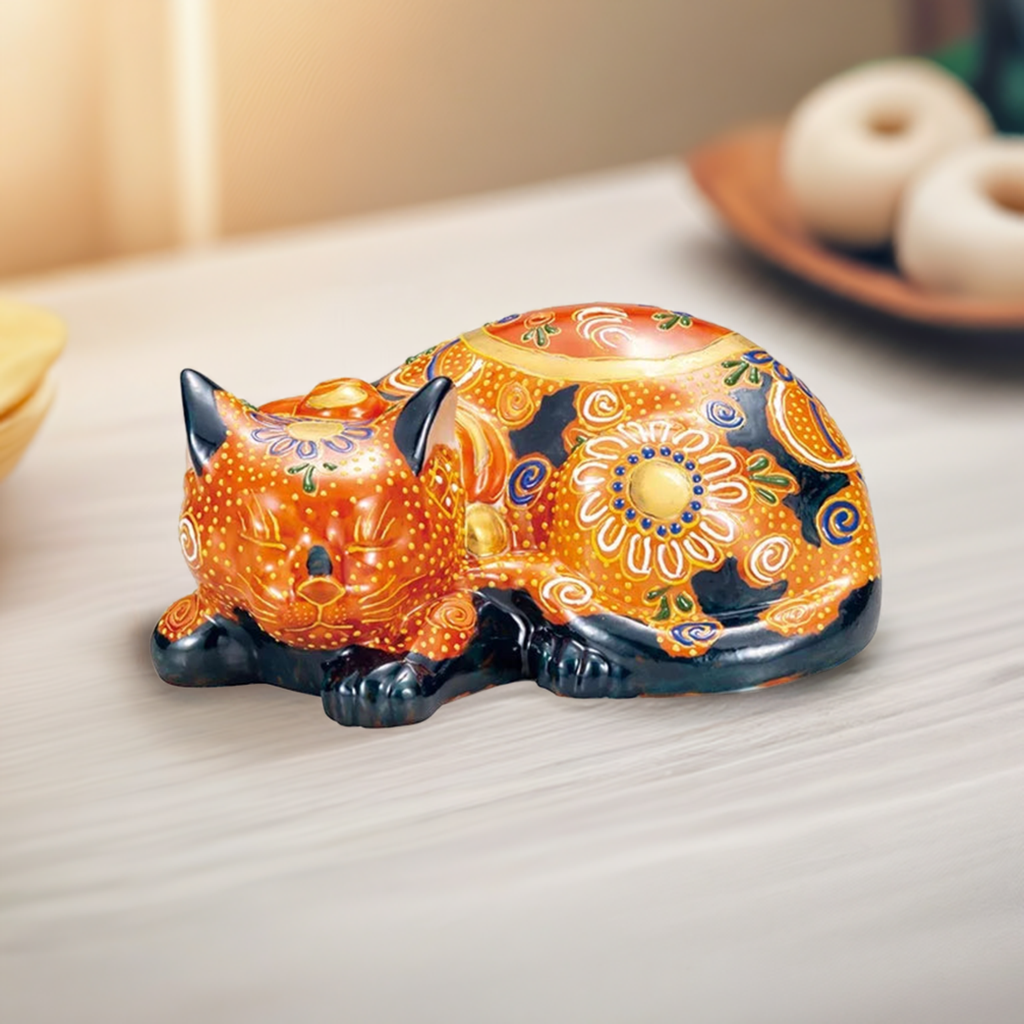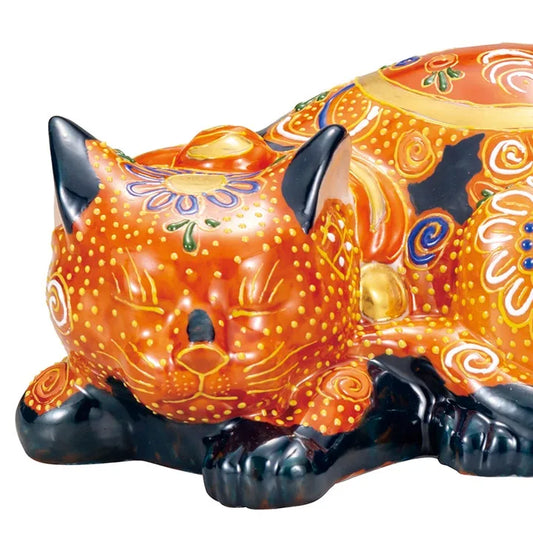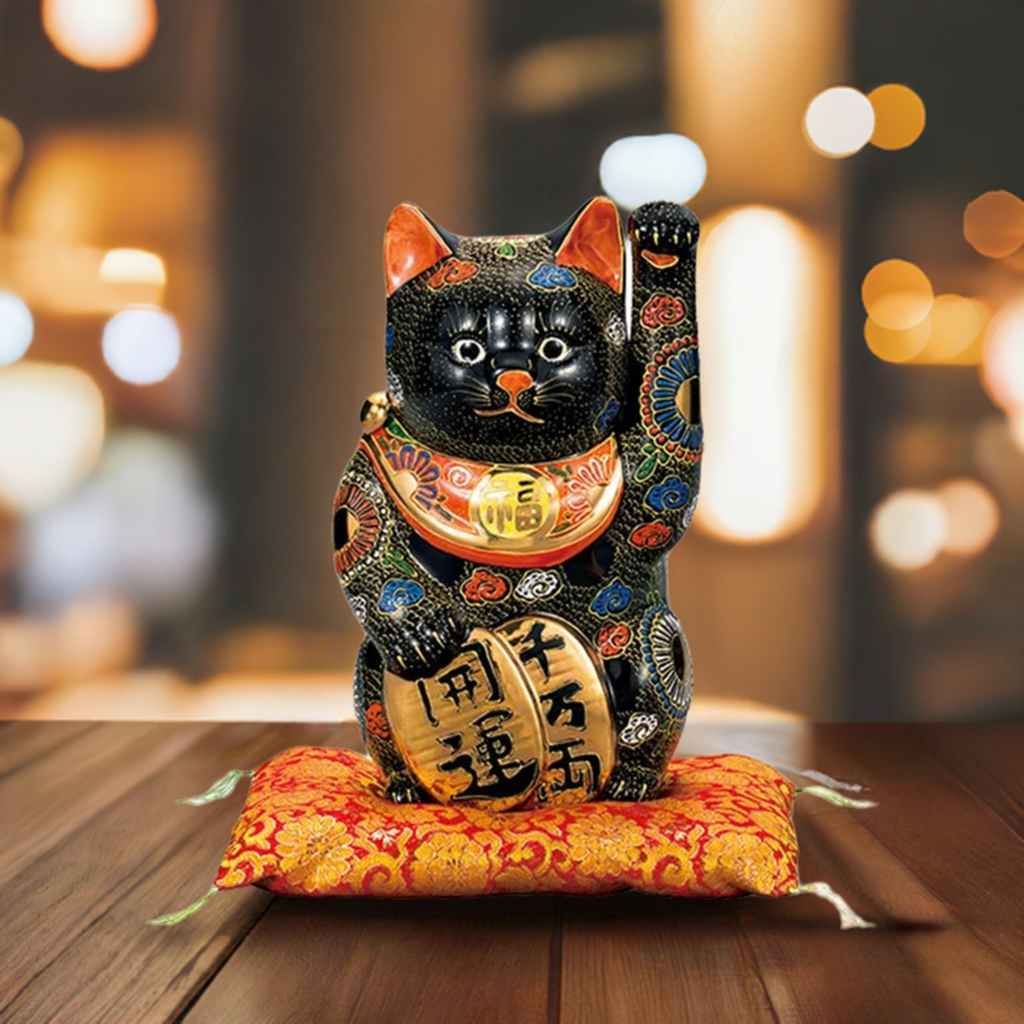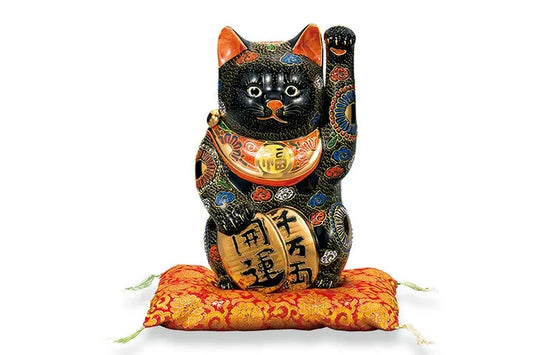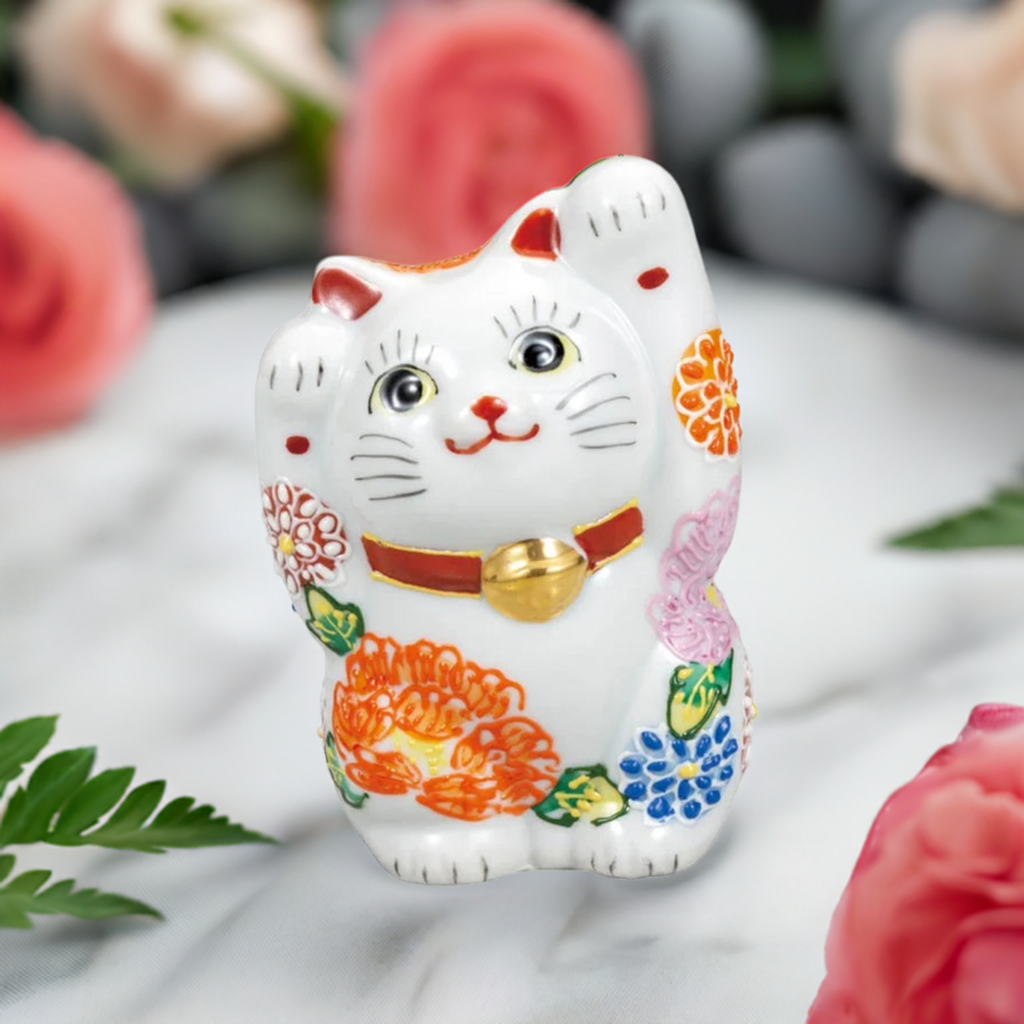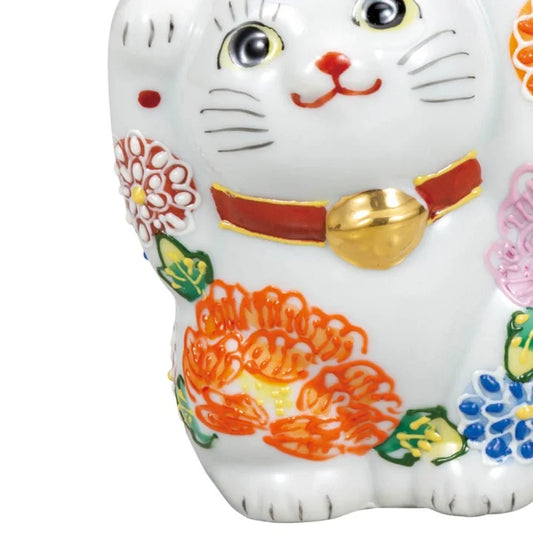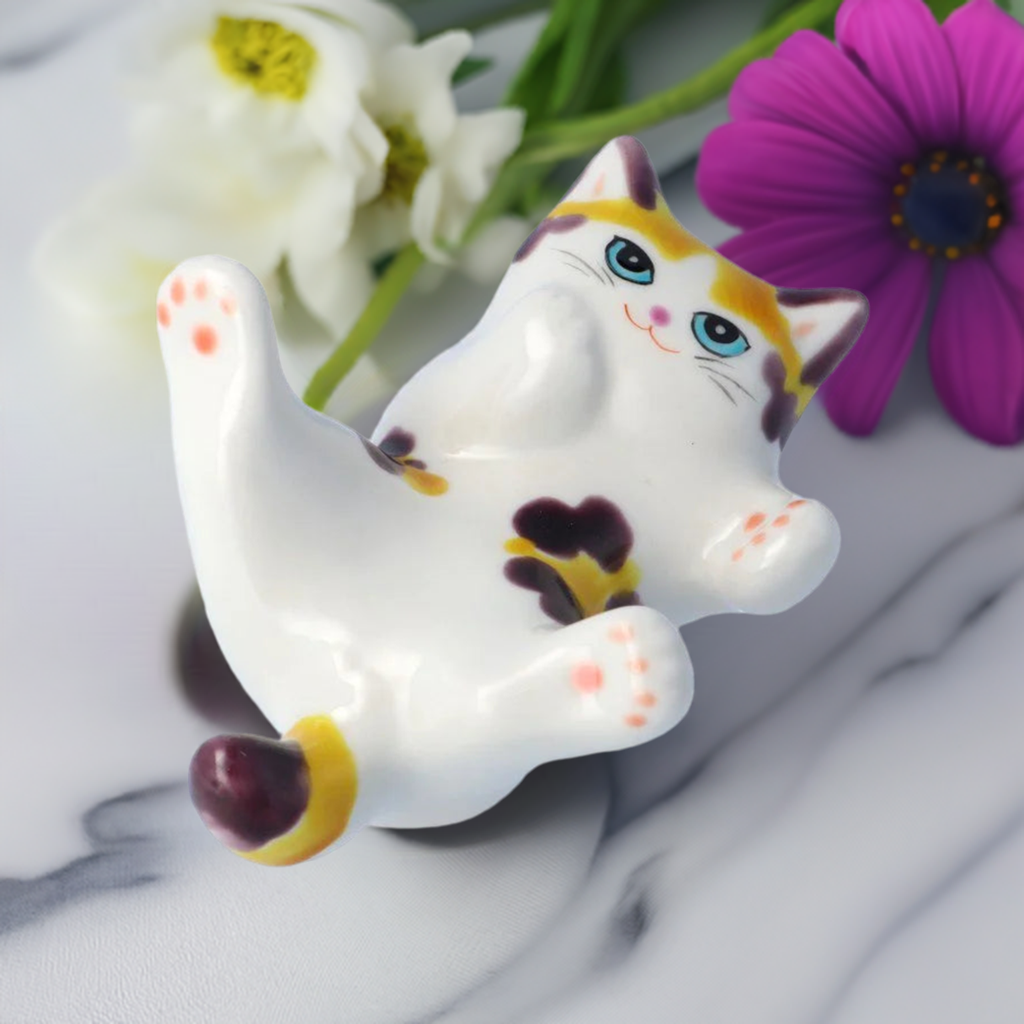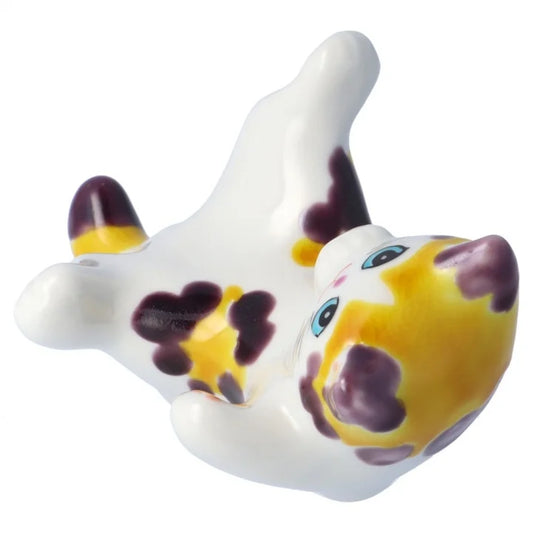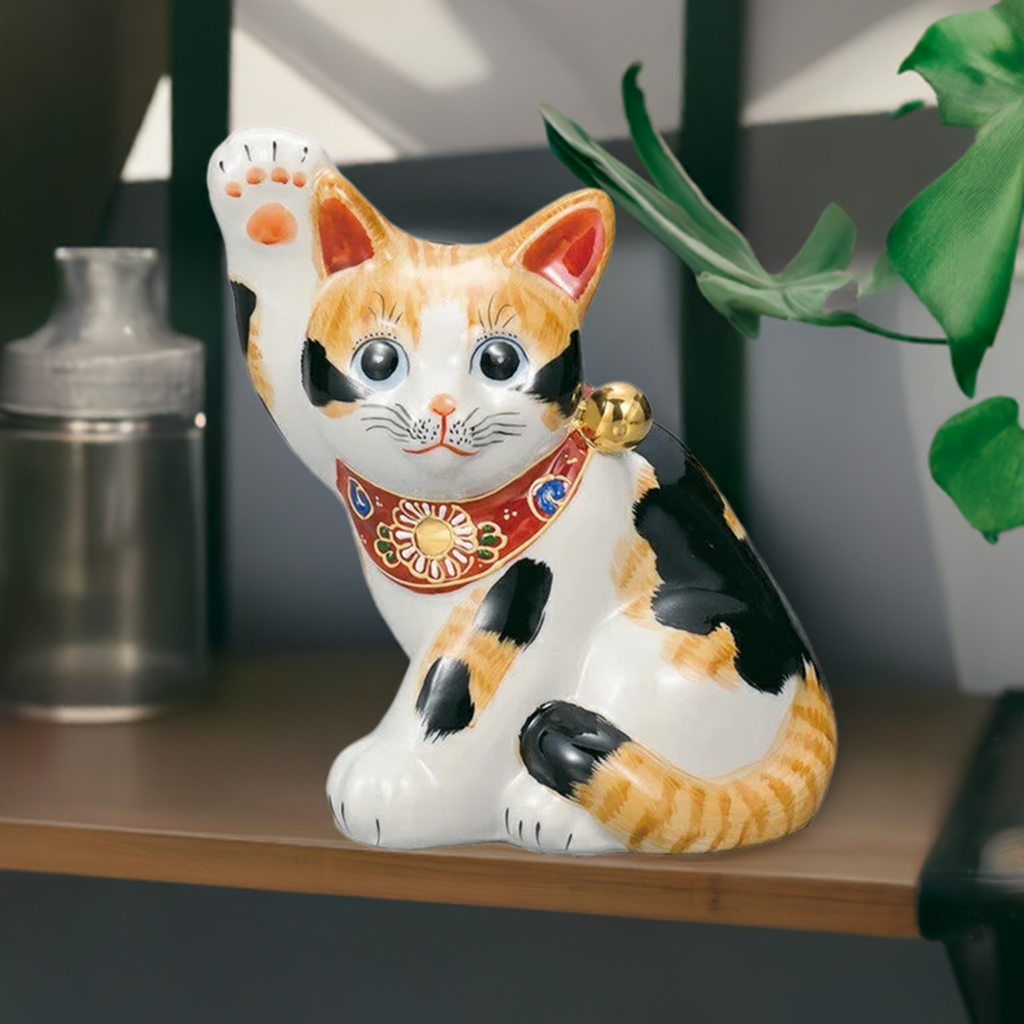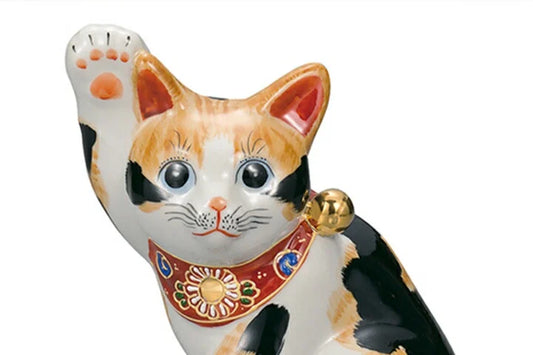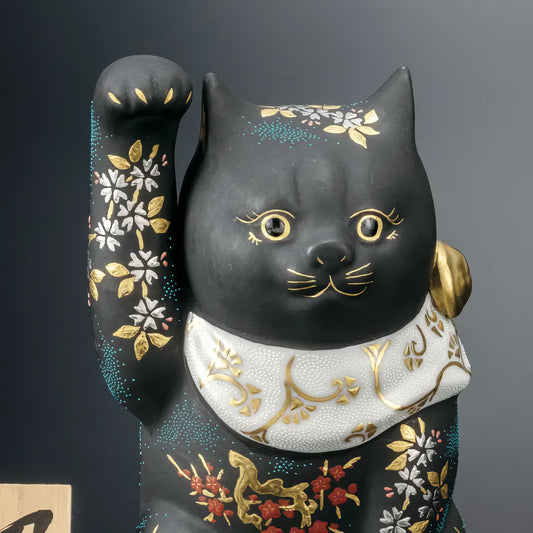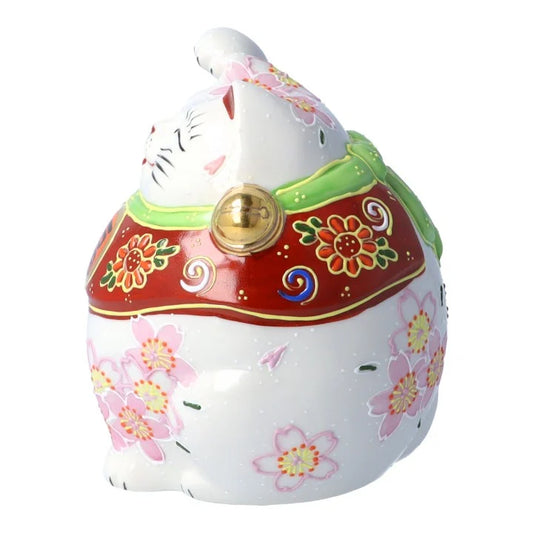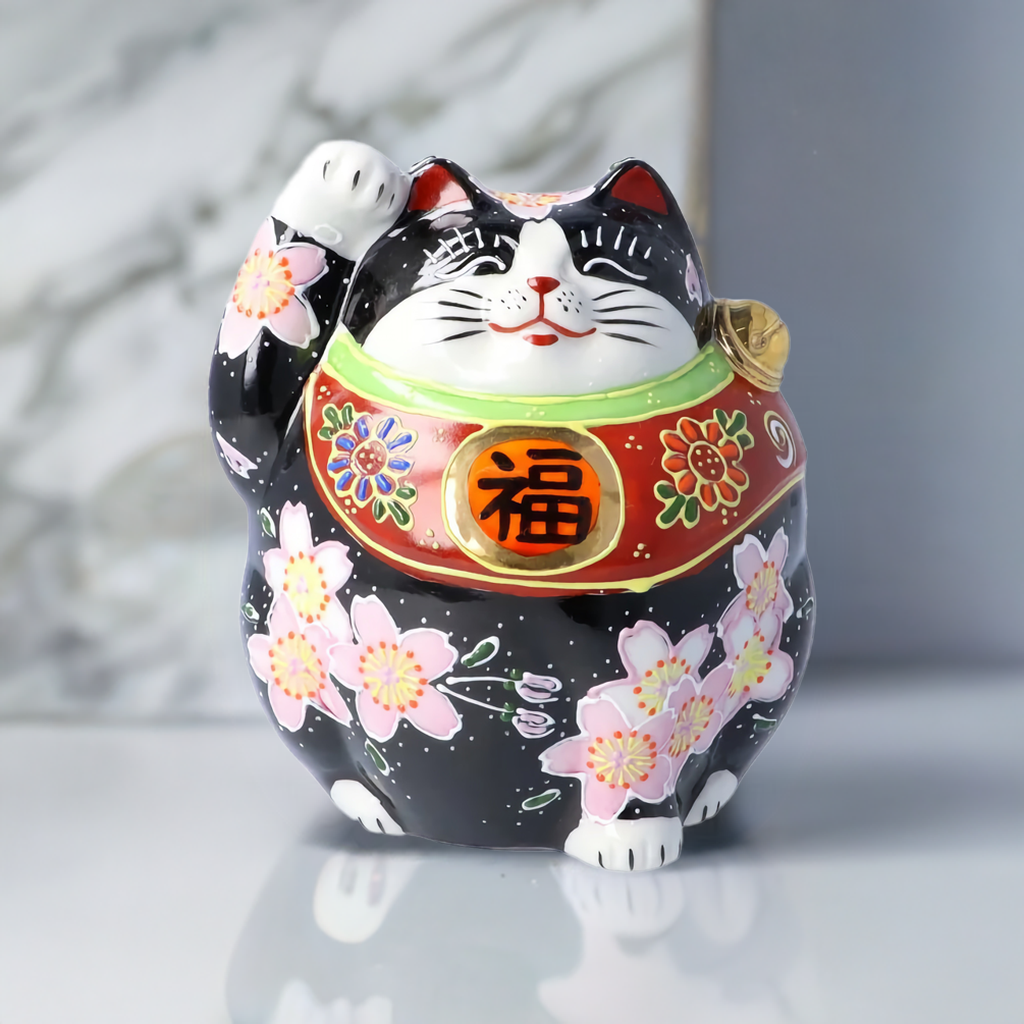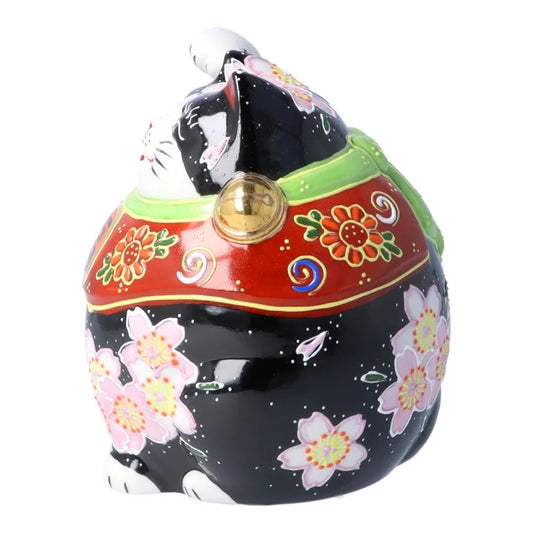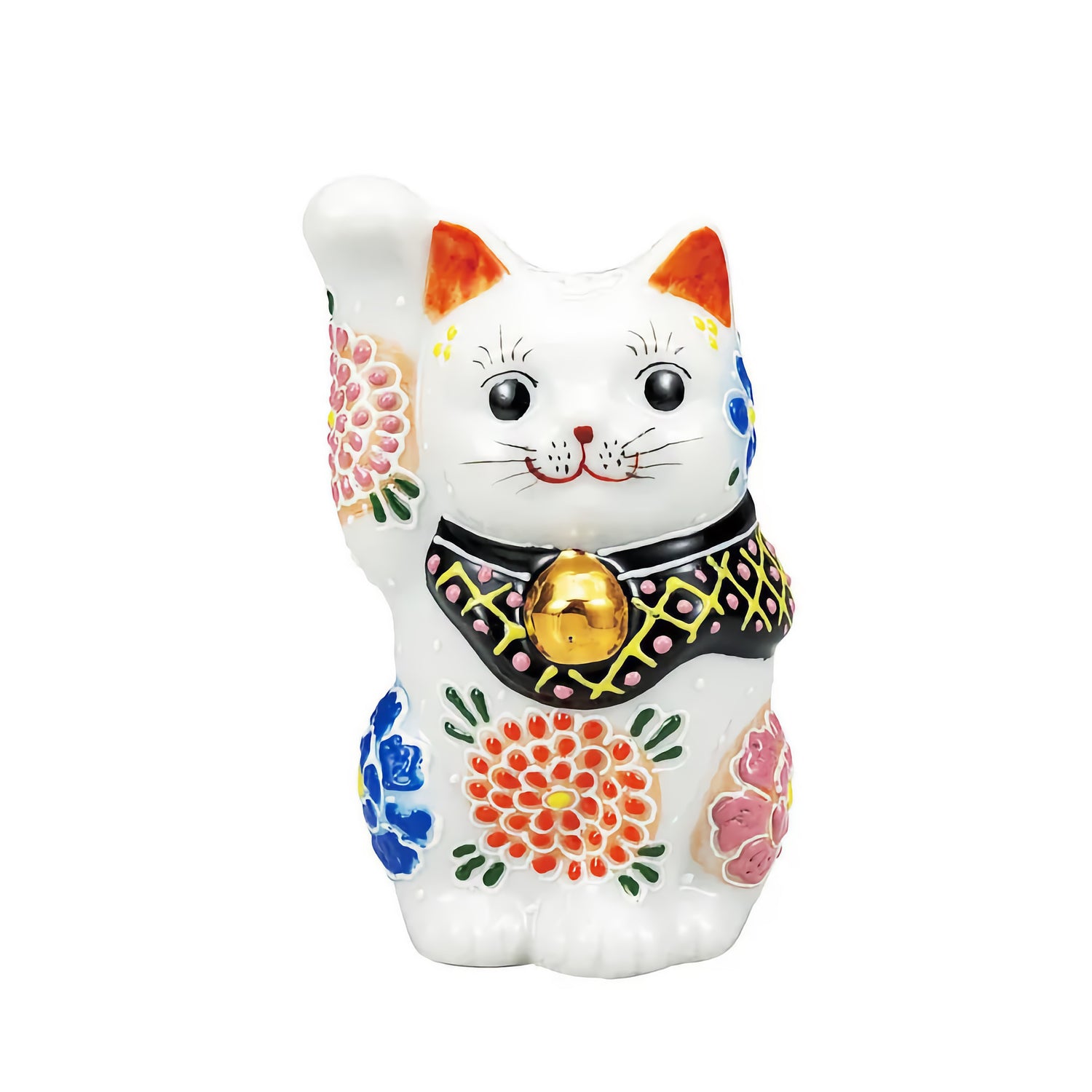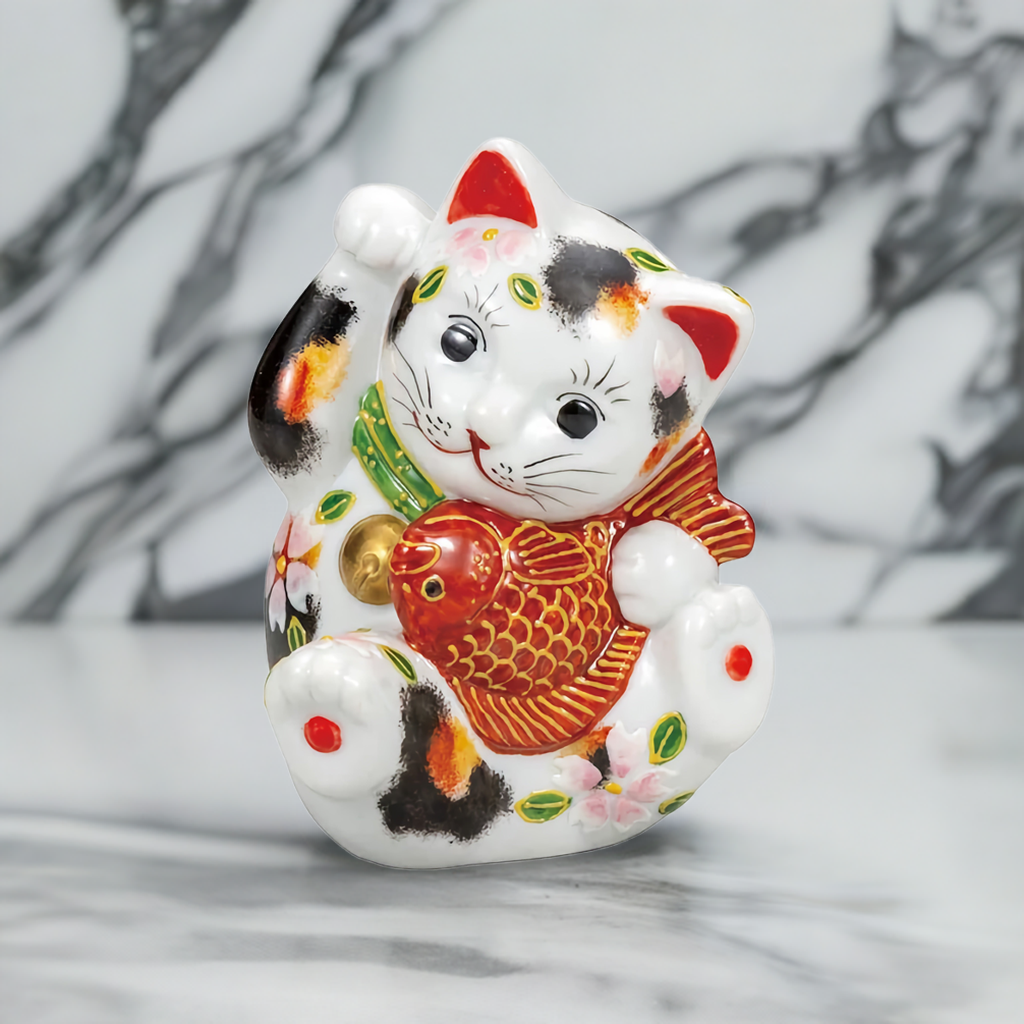
Lucky Cat "Maneki-Neko"
Often referred to as a ‘lucky cat’ in English, a Maneki-Neko is an iconic figurine and image of Japanese culture. Typically depicting a calico cat with a paw raised in a beckoning gesture, lucky cats are typically placed near the entrance of businesses in Japan. This serves the double-purpose of beckoning luck and potential customers to enter the storefront. However,did you know that there are many different types of lucky cats in Japan? Let’s look at the history and origin of lucky cats, as well as characteristics of their design, and where to place them.

Raised left paw
A beckoning cat with its left hand raised is said to be beneficial for inviting people in, or in other words, for business prosperity. It is a good idea to display it in your store or office.

Raised right paw
Most lucky cats found placed in homes have their right paw raised. This type of lucky cat is said to bring good fortune to its owner. This style of lucky cat is commonly placed near the cashier or main entrance of shops in Japan.

Both paws raised
A lucky cat with both paws raised brings its owner the combined effect of left and right paws, i.e., both people and good luck. This type of lucky cat is believed to bring more fortune and longer life.

High raised paw
With an arm stretched long upwards, a lucky cat with a high raised paw has significant symbolism in its design. With a paw stretched far into the air, a lucky cat with a high raised paw brings good fortune that stretches into the far future.
Recently viewed
